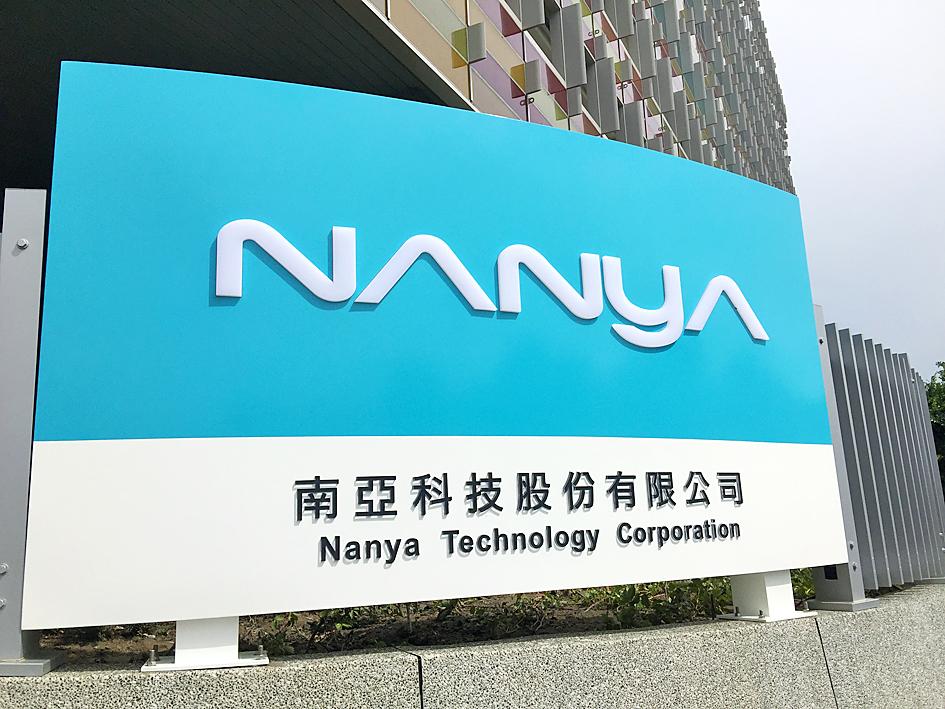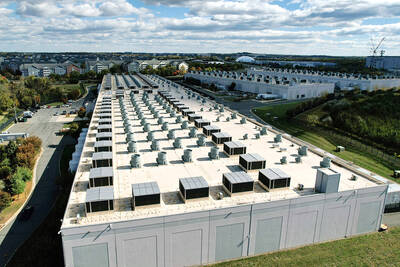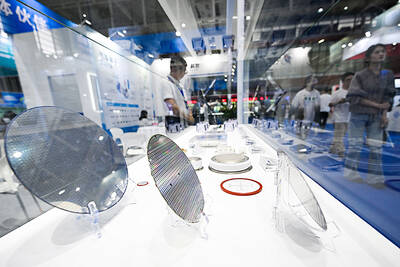DRAM chipmaker Nanya Technology Corp (南亞科技) expects an uptrend in demand and chip prices to extend into next quarter as telework and remote learning continue to drive purchases of servers and PCs, a company executive said yesterday.
As enterprises and schools sent their employees and students home to contain the spread of the novel coronavirus, people have to use computers to work or to learn remotely and connect to the Internet, Nanya Technology president Lee Pei-ing (李培瑛) told reporters on the sidelines of an annual general meeting in Taoyuan.
“Originally, people expected the second quarter would be a down [season]. Due to telework and online learning, the second quarter is turning out to be a stronger season,” Lee said.

Photo: Hung Yu-fang, Taipei Times
As the penetration rate of PCs remains relatively low and is unlikely to surge overnight, “I believe the [momentum] will last into the third quarter... There is a chance to see a further price uptick,” he said.
Rising data traffic has further spurred demand for faster Internet connections and driven demand for cloud-related equipment and networking devices, Nanya Technology said.
Nanya Technology’s latest comments echoed Micron Technology Inc’s optimism about next quarter. The US company overnight raised its revenue forecast to between US$5.2 billion and US$5.4 billion, from an earlier estimate of between US$4.6 billion and US$5.2 billion.
However, the COVID-19 pandemic and escalating US-China trade friction are creating greater uncertainty in the second half for the global economy, which has depressed demand for smartphones and consumer electronics, Lee said.
Asked about the US limiting Huawei Technologies Co’s (華為) access to chips from non-US suppliers, Lee said that Nanya Technology cannot comment on any single client.
The company would do its best to satisfy customers’ demand, while abiding by the law, he said.
Nanya Technology shareholders yesterday approved a cash dividend distribution of NT$1.5 per common share, representing a yield of 2.46 percent based on the chipmaker’s share price of NT$60.9 in Taipei trading.
The pandemic has not caused a serious delay in equipment delivery and the firm is on track to start initial production using 10-nanometer technology in the second half of this year, Nanya Technology chairman Wu Chia-chau (吳嘉昭) said.
The firm’s second-generation 10-nanometer products would begin pilot production in two years, he said.
The chipmaker this year boosted capital spending to NT$9.2 billion (US$306.21 million) to develop 10-nanometer technology.
Nanya Technology, which holds more than 4,200 patents, has established an 800-engineer research team.

The demise of the coal industry left the US’ Appalachian region in tatters, with lost jobs, spoiled water and countless kilometers of abandoned underground mines. Now entrepreneurs are eyeing the rural region with ambitious visions to rebuild its economy by converting old mines into solar power systems and data centers that could help fuel the increasing power demands of the artificial intelligence (AI) boom. One such project is underway by a non-profit team calling itself Energy DELTA (Discovery, Education, Learning and Technology Accelerator) Lab, which is looking to develop energy sources on about 26,305 hectares of old coal land in

Taiwan’s exports soared 56 percent year-on-year to an all-time high of US$64.05 billion last month, propelled by surging global demand for artificial intelligence (AI), high-performance computing and cloud service infrastructure, the Ministry of Finance said yesterday. Department of Statistics Director-General Beatrice Tsai (蔡美娜) called the figure an unexpected upside surprise, citing a wave of technology orders from overseas customers alongside the usual year-end shopping season for technology products. Growth is likely to remain strong this month, she said, projecting a 40 percent to 45 percent expansion on an annual basis. The outperformance could prompt the Directorate-General of Budget, Accounting and

Netflix on Friday faced fierce criticism over its blockbuster deal to acquire Warner Bros Discovery. The streaming giant is already viewed as a pariah in some Hollywood circles, largely due to its reluctance to release content in theaters and its disruption of traditional industry practices. As Netflix emerged as the likely winning bidder for Warner Bros — the studio behind Casablanca, the Harry Potter movies and Friends — Hollywood’s elite launched an aggressive campaign against the acquisition. Titanic director James Cameron called the buyout a “disaster,” while a group of prominent producers are lobbying US Congress to oppose the deal,

Two Chinese chipmakers are attracting strong retail investor demand, buoyed by industry peer Moore Threads Technology Co’s (摩爾線程) stellar debut. The retail portion of MetaX Integrated Circuits (Shanghai) Co’s (上海沐曦) upcoming initial public offering (IPO) was 2,986 times oversubscribed on Friday, according to a filing. Meanwhile, Beijing Onmicro Electronics Co (北京昂瑞微), which makes radio frequency chips, was 2,899 times oversubscribed on Friday, its filing showed. The bids coincided with Moore Threads’ trading debut, which surged 425 percent on Friday after raising 8 billion yuan (US$1.13 billion) on bets that the company could emerge as a viable local competitor to Nvidia